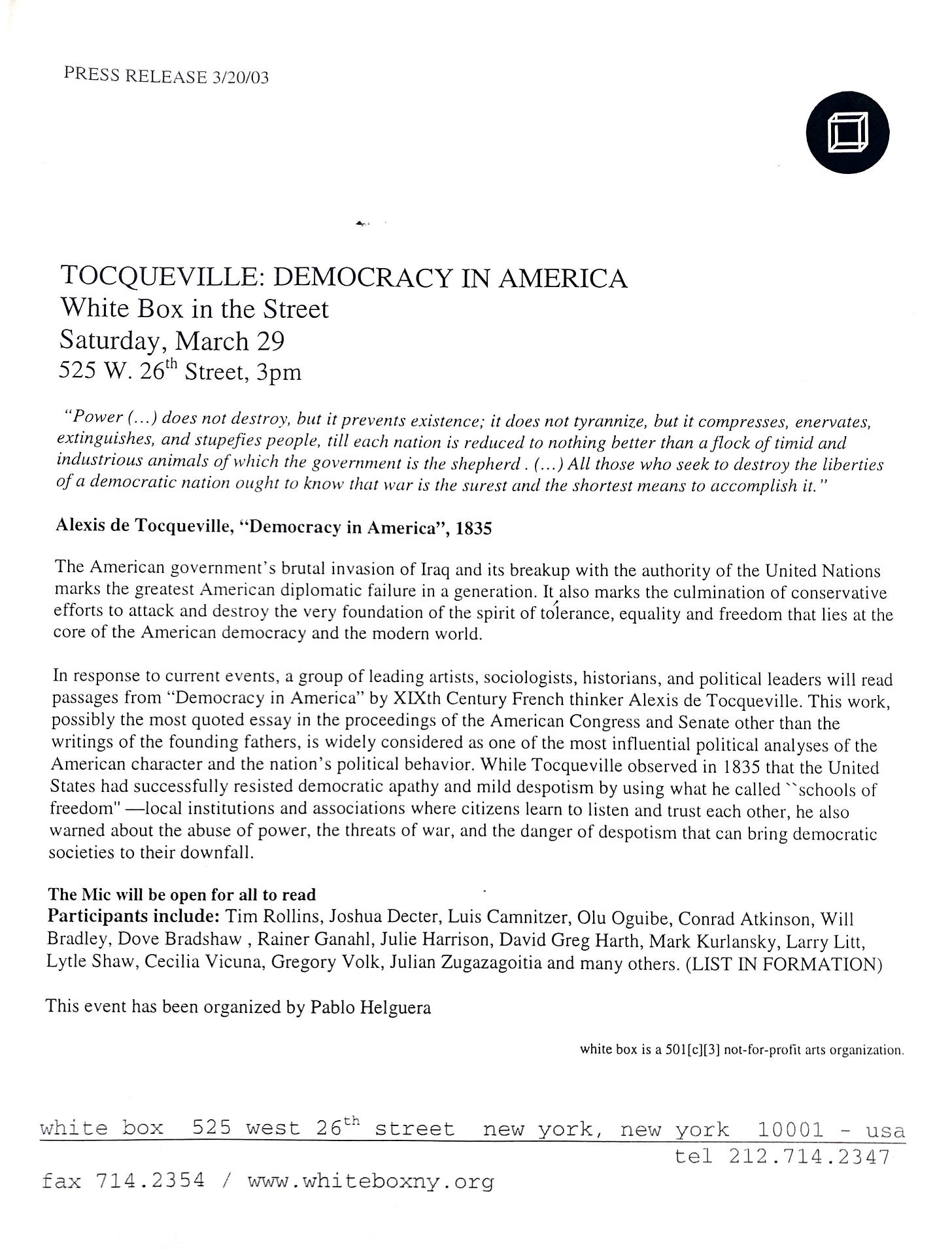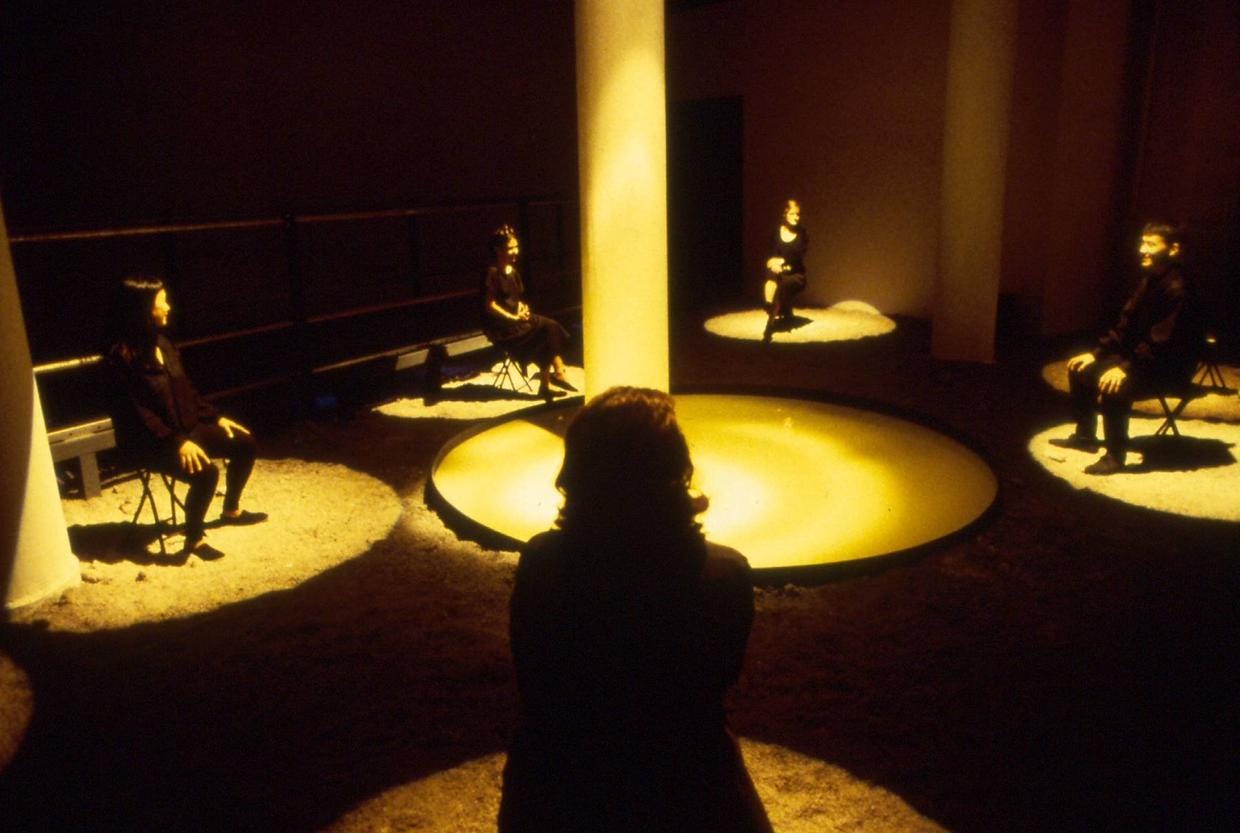One of Andy Warhol’s most famous filmed interviews is from 1966, during the height of his fame. In the film, the interviewer makes every effort to get the artist to speak about the meaning of his work and his motives. The interview is cringe-worthy: you can feel the discomfort of the interviewer in his body language, pushing himself back in the chair as pretending it is a casual situation, but at the same time in a position that communicates fear caused by the artist’s inscrutable and almost catatonic pose, with dark glasses and his hand on his chin. Warhol completely plays his interviewer like a fiddle, outmaneuvering him and turning the conversation into a performance piece. At some point Warhol says: “why don’t you just tell me the words and I can just repeat them, because I can’t think of anything, really”, and proceeds to answer every question with an affirmative reformulation of the question. This typically Warholian strategy is documented in the book I’ll be your Mirror, where in the introduction art historian Reva Wolf points at Warhol’s “masterful use of evasion.” But for all his evasion, or perhaps thanks to it, Warhol constructed a self-effacing persona and a body of work that allowed millions of viewers to see themselves in it. As Thierry de Duve best put it: "Warhol may be the one person who has understood, consciously or not I don't know, that to be a star is to be a blank screen […] A blank screen for the projection of spectators' phantasms, dreams, and desires."
So: how do we see ourselves in the ideas and in the art of others? Just to make a very selective list, here are three pairs of examples, divided in the areas of political thought, film, and performance.
Act I: The Political Thinkers
As an act of protest to the US invasion of Iraq in March of 2003, exactly 20 years ago this week, I organized a reading at Whitebox (the alternative non-profit art space which was then on 26th Street in Chelsea) with a range of artists, thinkers and writers which included Tim Rollins, Conrad Atkinson, Olu Oguibe, Cecilia Vicuña, Luis Camnitzer, and many others. We read excerpts from Alexis de Tocqueville’s 1835 book Democracy in America, a book written by a French aristocrat that turned out to be one of the most insightful analyses of the young United States. De Tocqueville’s book, which correctly predicted the American Civil War and the rise of an industrial aristocracy in the US, has often been lauded as the most important work on the subject of democracy and the most insightful analysis of the American character, and offers plenty of warnings of the kind of abuse of power and injustice that we saw the US government exerting during those days in its self-righteous crusade while following the Bush doctrine.
What I learned from that experience, however, was that de Tocqueville’s book is also often quoted by both conservative and liberal politicians, which means that his ideas, while accurate, are adaptable to a range of political positions. Ever since that time it has been fascinating to me every now and then to see politicians whose worldviews are completely opposite to mine quote De Toqueville with great reverence in order to prove a point.
A similar situation arises with the work of the Cuban nationalist poet and political theorist José Martí, who is often quoted by both communists and capitalists alike and of which novelist Achy Obejas once observed: “He’s a little like the Bible: Whatever you want to find support for, there’s usually a little something in his work that will reflect your desire.”
Obejas’s comment is worth thinking about for a minute: A little something in the work that reflects your desire. Or, if you will, the political theory equivalent of the Warholian blank screen.
But to the question of how we become the reflection of the desires of others, and how we can make artworks that produce that effect, I will next mention two film characters, and finally two real-life performance artists.
___
Act 2: The Film Characters
The first character is Pascal from the 1996 movie Big Night (spoiler alert). Pascal (played by Ian Holm) is restaurant owner of a mediocre but commercially successful Italian restaurant in New Jersey in the 1950s who finds himself in competition with two idealistic and recently immigrated Italian brothers from Calabria, the entrepreneur Secondo (played by Stanley Tucci, who also co-directed the film) and the perfectionist chef Primo (played by Tony Shalhoub). The brother’s restaurant, which aims to serve sublime and authentic Italian cuisine but is not appreciated by the unrefined American palates of the Jersey shore, is financially failing. Pascal wants to crush the competition once and for all and convince the brothers to go work for him; so he falsely offers to bring a famous star to the brother’s restaurant, causing them to go bankrupt organizing a big event. When he becomes aware of Pascal’s dishonest maneuvers, Secondo confronts Pascal. Pascal he explains that he did it because Primo is “a great investment” that he wants to acquire. Secondo tells him: “[my brother]lives in a world above you. What he has, and what he is …is rare. You are nothing.”
To which Pascal answers: “I’m a businessman. I’m anything I need to be, at any time. Tell me, what exactly are you?”
The second film character is Chance, the protagonist of the 1979 film Being There, directed by Hal Ashby. This satirical film is about a simple-minded gardener (played by Peter Sellers in one of the last performances of his career) who due to the serendipities of fate ends up being mistaken by a great political thinker. In an accidental encounter with powerful political figures, Chance’s very basic pronouncements about gardening end up being interpreted as deep philosophical metaphors of government policy, and when he says he is “Chance, the gardener”, people hear the name “Chauncey Gardiner”. Soon Chauncey Gardiner is on television being interviewed and hailed as a political oracle of sorts. Without even realizing it, his reputation grows to the point that at the end of the film political operatives start thinking of him as potential presidential material.
Both characters are studies in projection; one cynical and opportunistic, the other unaware and his mirroring effect entirely accidental. Pascal stands for brutal capitalist greed in opposition of artistic idealism; Chance the gardener is a metaphor for the gullibility of the public and the power of false prophets- both characters, in fact, which happen to represent aspects of the current dynamics of the Republican party in the United States.
But these are, as I said, fictional stories and not about artworks per se. It is useful to see what happens when you consider the work of artists who are actually experts at listening.
Act 3: The Artists
In order to best explain mirroring in art (and not beyond literal reflections) one has to turn to performance, and in particular the genre of documentary theater. The best examples of this kind of work (also sometimes described as investigative theater or theater of witness) are not flights of creative fancy, but generally truthful representations of real-life people, and the result of deep research. This approach generated important theater work in the early 1990s, and it is also relevant to note that some of the best artists in this realm are precisely those for whom the subject of cultural/ethnic difference is central (i.e. women and artists of color).
The first example is Anna Deavere Smith, whose theatre work is rooted on countless of interviews (her solo play Fires in the Mirror, which documents the Crown Heights Riot of 1991, is the result of 100 interviews where she performs 26 different characters. Deavere Smith is not only a great actor, but one who takes research and empathy very seriously. It is also not a coincidence that she is a gifted educator, as is the case of the next artist I will mention.
I think often of Ping Chong, whose work I encountered as an art student right during the time when he first launched Undesirable Elements. Chong’s process involves the development of theatrical material in collaboration with non-actors who tell their own life stories. The piece, originally accompanying an installation by the artist at Artist Space titled A Facility for the Channeling and Containment of Undesirable Elements, sought to provide a witness account of various individuals during the time of the Reagan era and the impact of rising neoliberalism in their lives. I have always seen Ping Chong’s work as an early example of socially engaged art.
Chauncey Gardiner is a character that symbolizes the natural state of the blank screen, where everyone extracts whatever they want from it, as if he were a feral De Tocqueville—or a readymade Warhol. Most of us can’t be “masters of evasion”, nor a pure illuminated individual not entirely aware of their divinity and need to be explained/translated by curators and critics. And as one can’t willfully become Chauncey the gardener, neither is the art practice the best path to become a political soothsayer. So when I teach my students, I point to the practice of artist like Anna Deavere Smith and Ping Chong- one that involves research and application, simply careful technical work that might require making something beyond images; a process that involves listening to others and creating works that reflect them by combining the creative talents akin of the ones of both the therapist and the watchmaker. Perhaps it is a bit more like the character of Pascal, learning to be whatever he needs to be at any time— but hopefully without the cynicism.
And when artworks are able to speak to our experience, we see ourselves in them because human experience, as de Tocqueville said of history, is a gallery of pictures in which there are few originals and many copies.






